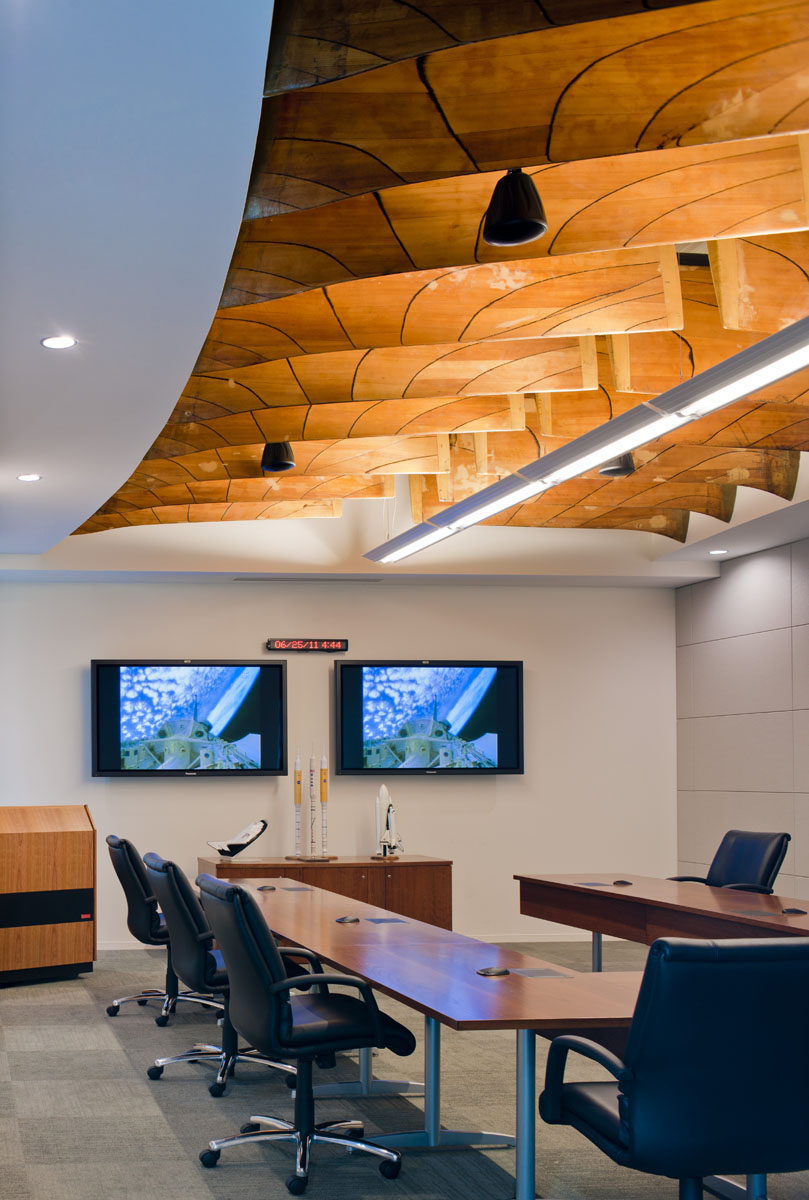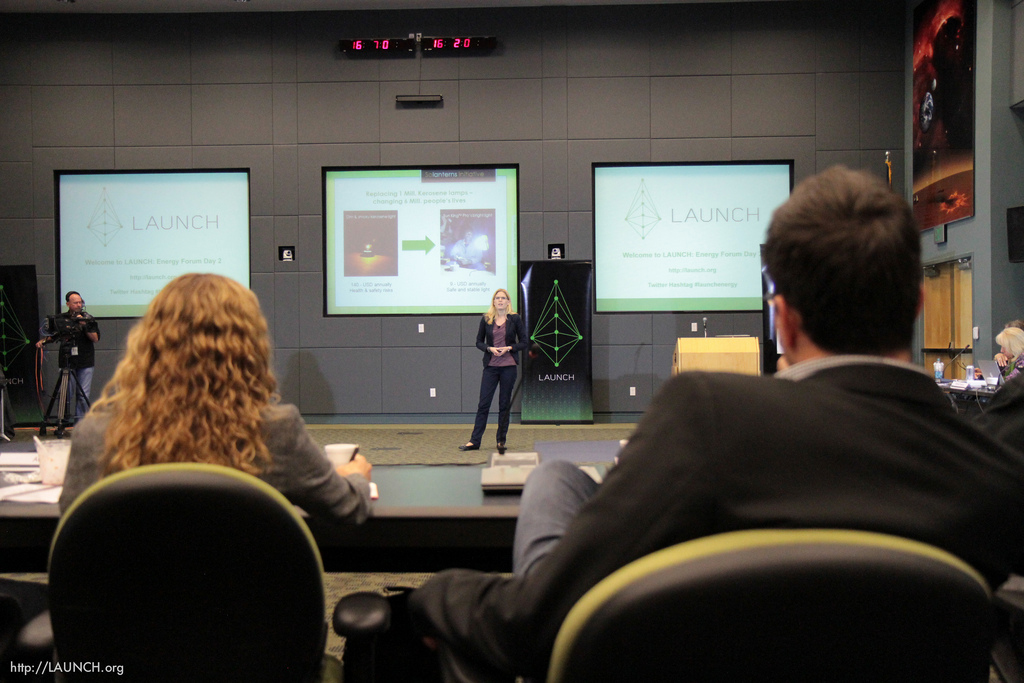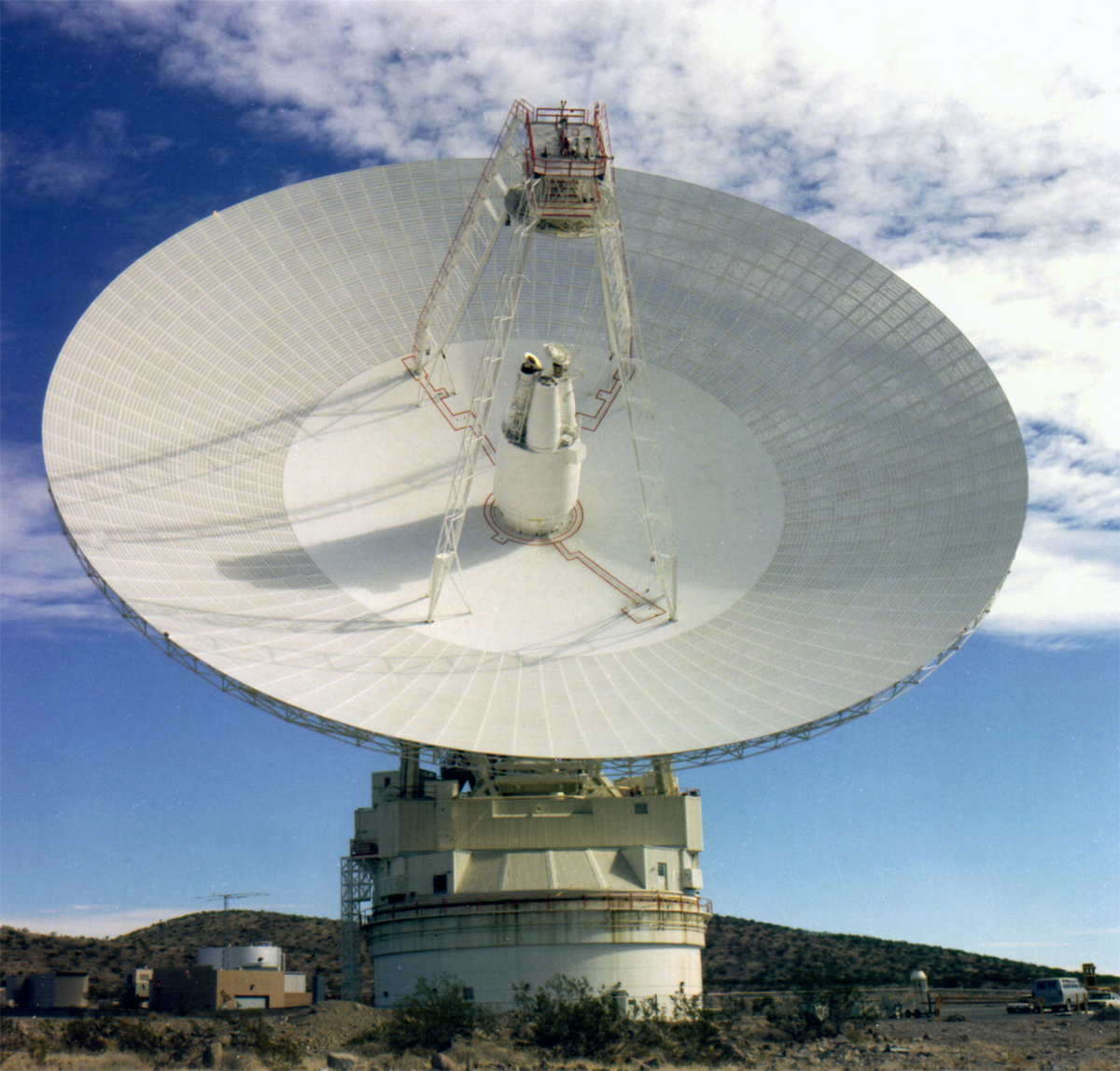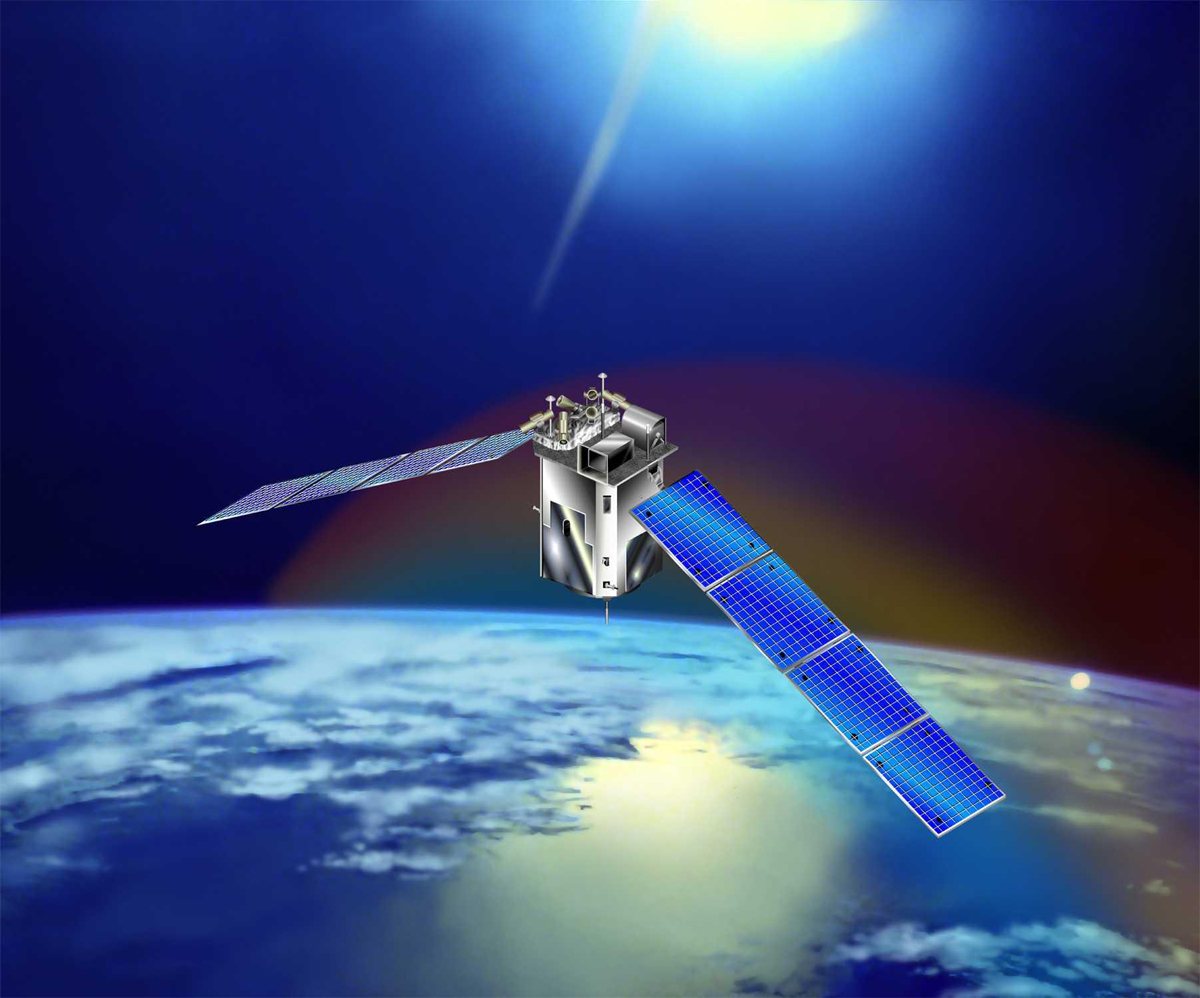
The new Propellants North facility at NASA's Kennedy Space Center in Florida made "green" a priority in design and construction. Photo Credit: NASA/ Frank Michaux
December 22, 2011 Vol. 4, Issue 10
Nearly a year after opening, Kennedy Space Center’s Propellants North Administrative and Maintenance Facility serves as a test bed for a new wave of infrastructure at NASA.
On January 20, 2011, Kennedy Space Center opened Propellants North, its second Leadership in Energy and Environmental Design (LEED) Platinum building. This hub for spacecraft fueling support and storage facility for cryogenic fuel transfer equipment is an early stepping stone toward green and sustainable infrastructure efforts at NASA.
Francis Kline, the Propellants North Project Manager, found a way to go beyond the norm. “Typically with a government facility, you’re trying to build the most efficient box you can,” he said. “While that’s OK, we pushed the envelope a bit.”
Buying In
Together with two in-house NASA architects, Eli Schoen and Tom Wilczek, Kline and his support team put together a green design that was shaped to include integrated solar panels on the roof, daylighting (the practice of maximizing ambient light inside a building), sustainable flooring, energy efficient appliances, and a rainwater harvesting system. To get leadership and management buy-in for their design, Kline decided to run a small side project. “In order to sell the idea to my management, we actually installed similar equipment in just their offices,” said Kline.
Kline installed day-lighting controls in his manager’s office. “He was really on the fence because he was afraid someone was going to complain about it,” explained Kline. “By us putting it in his office and him living with it before installing it in Propellants North, he was the one who said, ‘OK I believe you, it works.’” Kline’s team continued the experiment with other sustainable solutions: flooring, lights, hand dryers, and paints. “Most people won’t take your word for it,” he said. “If it’s right in front of you, it’s tough for them to say it doesn’t work when they’re living with it every day.”
All Others Bring Data
Propellants North was designed to be a “net-zero” building. This means that Propellants North has zero net energy consumption and no carbon emissions over the course of one year. Within the next few months, Kline will have the data needed to determine if Propellants North meets this definition. According to Kline, the photovoltaic data coming from the solar panels match the predictions. The summer months tend to take a toll on a building like Propellants North, primarily due to constantly cooling the hot air. “Right now, we have burned more power than we’re generating because of the summer, but we’re hoping to make that up in the winter,” said Kline.
When the building has power to spare, the excess gets pushed out to the KSC grid. “On weekends or as the building is producing more power at certain times of the day, it goes back out to the grid and feeds something else,” explained Kline. This of course is accomplished at no further cost to the government and in turn truly captures the idea of sustainable design, a concept that not only preserves the environment, but also provides a good return on investment.
A Sustainable State of Mind
The Propellants North building operates differently than most office buildings. The main control of the building is out of individuals’ hands, but they can alter their personal office environments. “At Kennedy, it seems that there are fifteen lighting fixtures per square foot. Employees are drenched in artificial light constantly,” said Kline. Daylighting in the building decreases the amount of artificial light needed. Each individual can control his or her HVAC by reconfiguring vents in the bamboo covered raised flooring. This means intra-office fights over turning up and down the thermostat for a larger space are minimized. It also saves energy.

Part of the parking lot at the Propellants North facility was tailor-made for electric cars. The covered area features plug-in stations for electric vehicles.
Photo Credit: NASA/ Frank Michaux
“[We] allow people to still feel like they’re in control of their space, but they’re not messing with any of the set points of the building,” said Kline. “When people start interfering with the system, that’s when consumption increases dramatically.”
Each work station is equipped with a 40-dollar power strip that, after a set amount of time, cuts electricity to everything except the CPU. “It’s almost like an off-sensor for your desk,” explained Kline. “This is the first time we have used them at Kennedy.” He believes that these little devices will show huge energy savings that are easily spread to other buildings that aren’t necessarily green. “You could go to the Vehicle Assembly Building and start installing these and it would have an immediate impact,” Kline added.
The building has a minimalistic design. One of the biggest challenges for Kline and his team was to decrease the amount of building operation and maintenance. For instance, not painting surfaces or opting for polished, concrete floors over shinier, waxed flooring. “Not having a painted wall to me is pretty cool. To be able to say that a wall, for the next sixty years, will never be painted and doesn’t need to be painted because we finished it in a certain way, is pretty neat.”
This sentiment is not widely held. A common piece of feedback Kline has received is about the aesthetics of the building. Kline finds that people just aren’t used to the minimalism that came with his green design. “In an office environment, people want it to look and feel a certain way,” he said. He’s learning from their feedback and finding ways to camouflage some of the green aspects.
In the near future, Kline will be receiving post-occupancy surveys from the employees who work at Propellants North. “All new buildings are pretty much successful and usually rate pretty high when you talk to people,” said Kline. “I want to see if the green aspect pushes us over the top, makes us even more successful than standard new building.”
What Comes Next
Since completing Propellants North, Kline has moved from his role at Construction of Facilities to be a part of the center-wide sustainability effort at Kennedy. Instead of focusing on one building, he is looking to make an impact on the whole center. His new role is a challenge, but he’s already starting to see an impact.
His main focus for now is recycling—but it goes beyond aluminum cans. For instance, in the construction of Propellants North Kline reused a lot of materials from other sites. He visited other sites where infrastructure was being torn down and ask to take certain pieces for reuse at Propellants.
“We just don’t do that enough,” said Kline. “It’s historical, too. We just tore down a launch pad that launched Apollo all the way through shuttle, and it’s gone. I would love to try and save some of that stuff to incorporate into the next building so that people remember what we do here.” At Propellants, Kline incorporated the stained Launch Control Center firing room windows right in the lobby. “It’s tough to walk into that building and not know that you’re at NASA.”
Kline’s other passion is electric car infrastructure. Propellants North is equipped with solar-powered electric charging stations for electric vehicles. “To me, that’s the way of the future,” said Kline. “I can go to Propellants North and never use a drop of oil. With an electric car, I can drive in, park under the solar canopy, charge my car using the sun, work in a building that’s being powered by the sun, get in my car, drive home at night, and never use a drop of oil.”
Although Kline doesn’t get to work in Propellants North, he’s excited by the prospect of what will come next and takes pride in the work he and his team have accomplished. “I really like walking people through the building and showing them around. Every two steps I can show you something different. I like people to sit in the cubes and ask, ‘Would you like to work here?’” According to Kline, they almost always say yes. “There’s a whole bunch of us out there trying to create sustainable work environments,” said Kline. “Just give us some time.”
Learn more about the Propellants North building.
The new Propellants North facility at NASA’s Kennedy Space Center in Florida made “green” a priority in design and construction.
Featured Photo Credit: NASA / Frank Michaux









